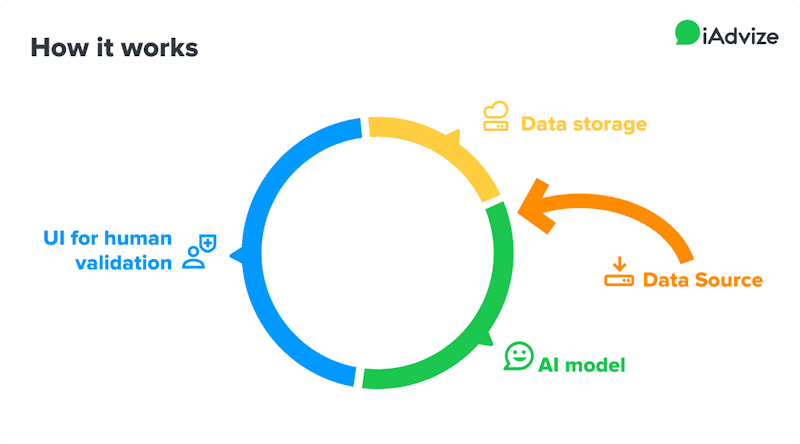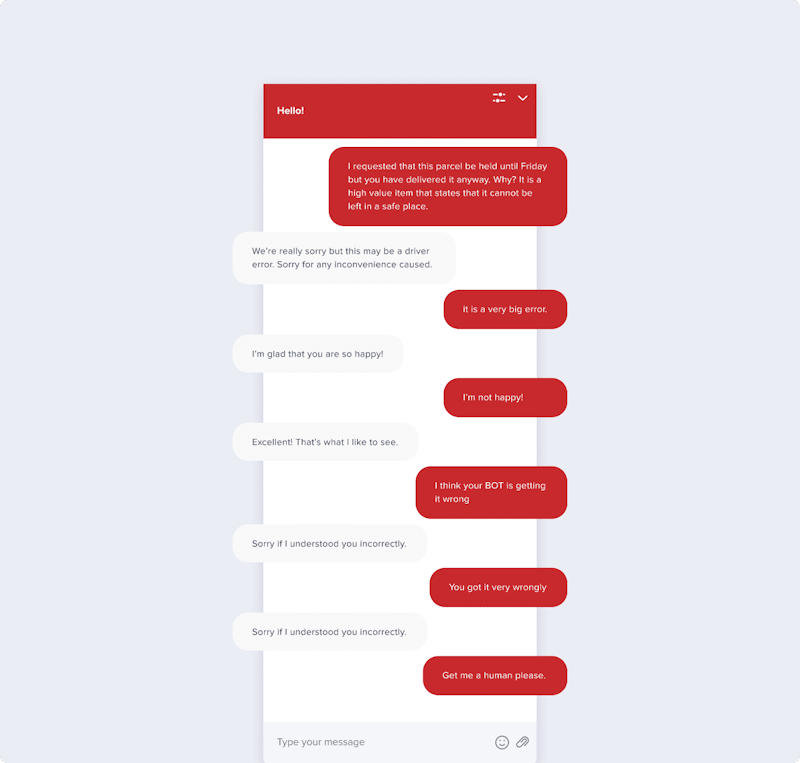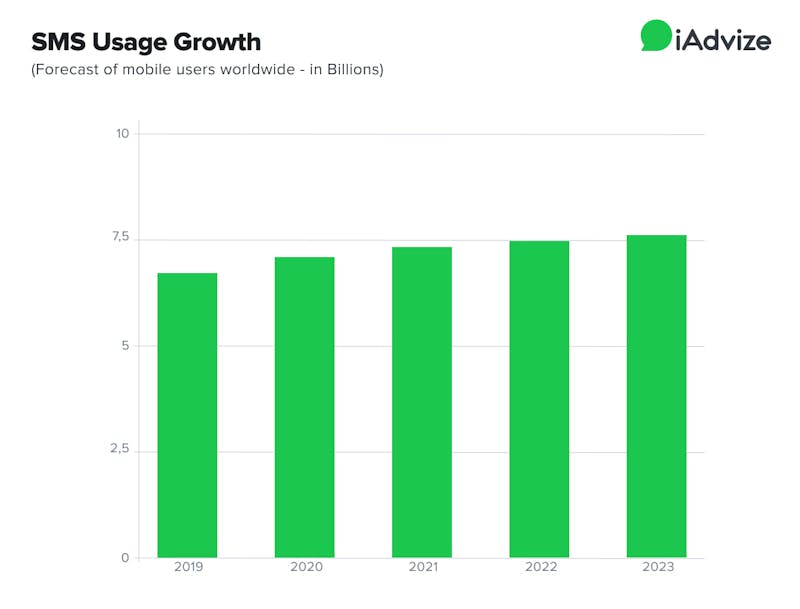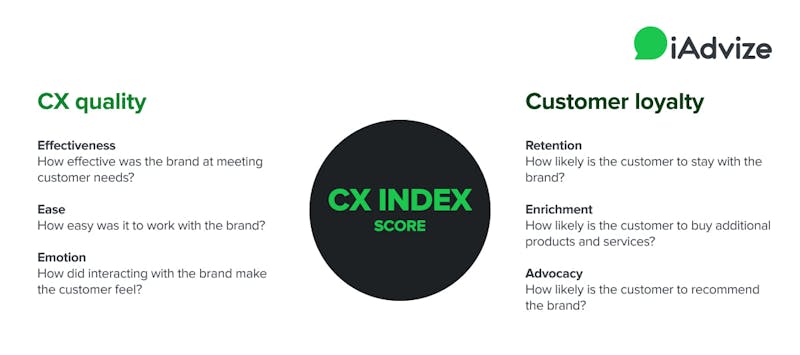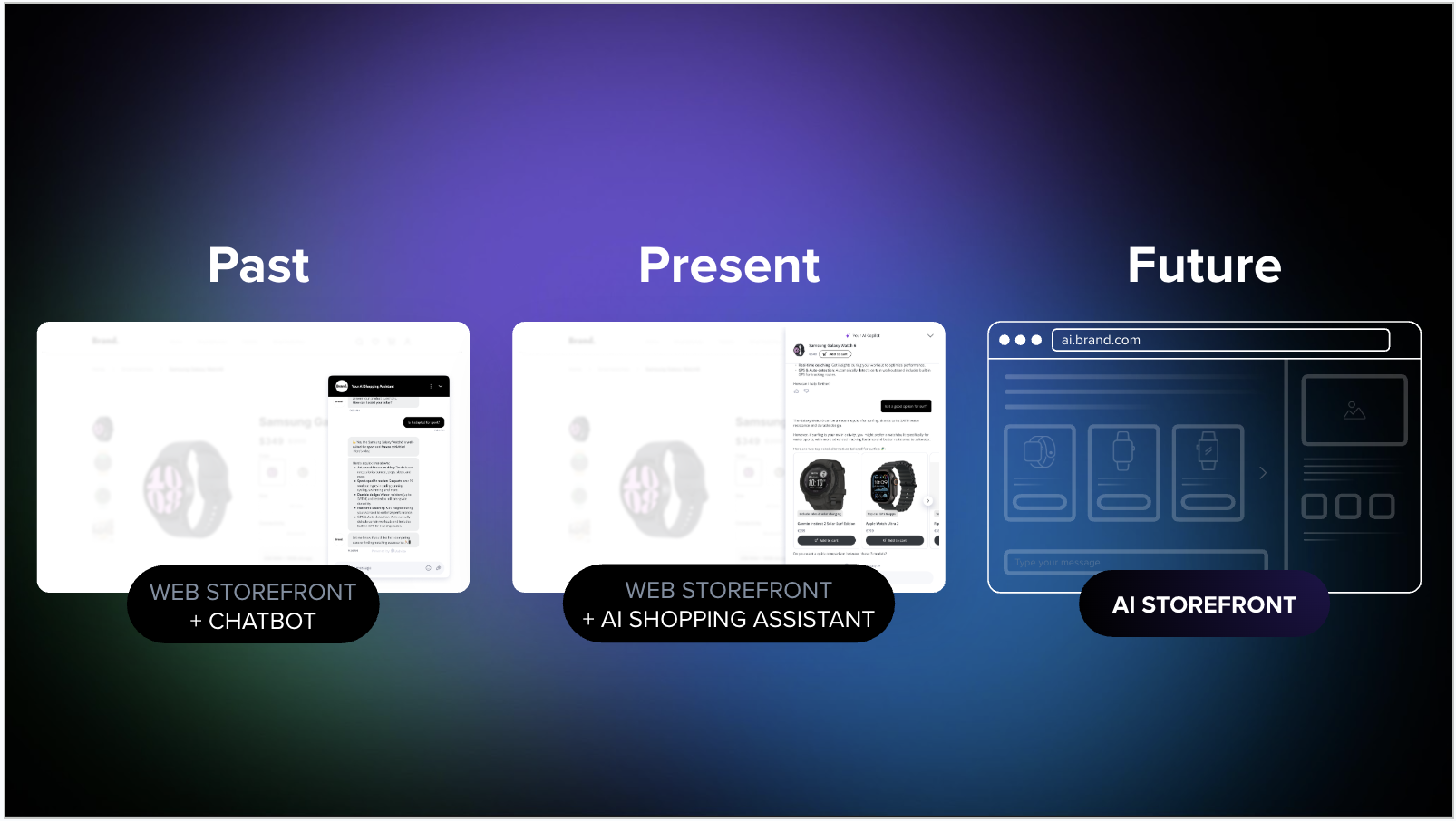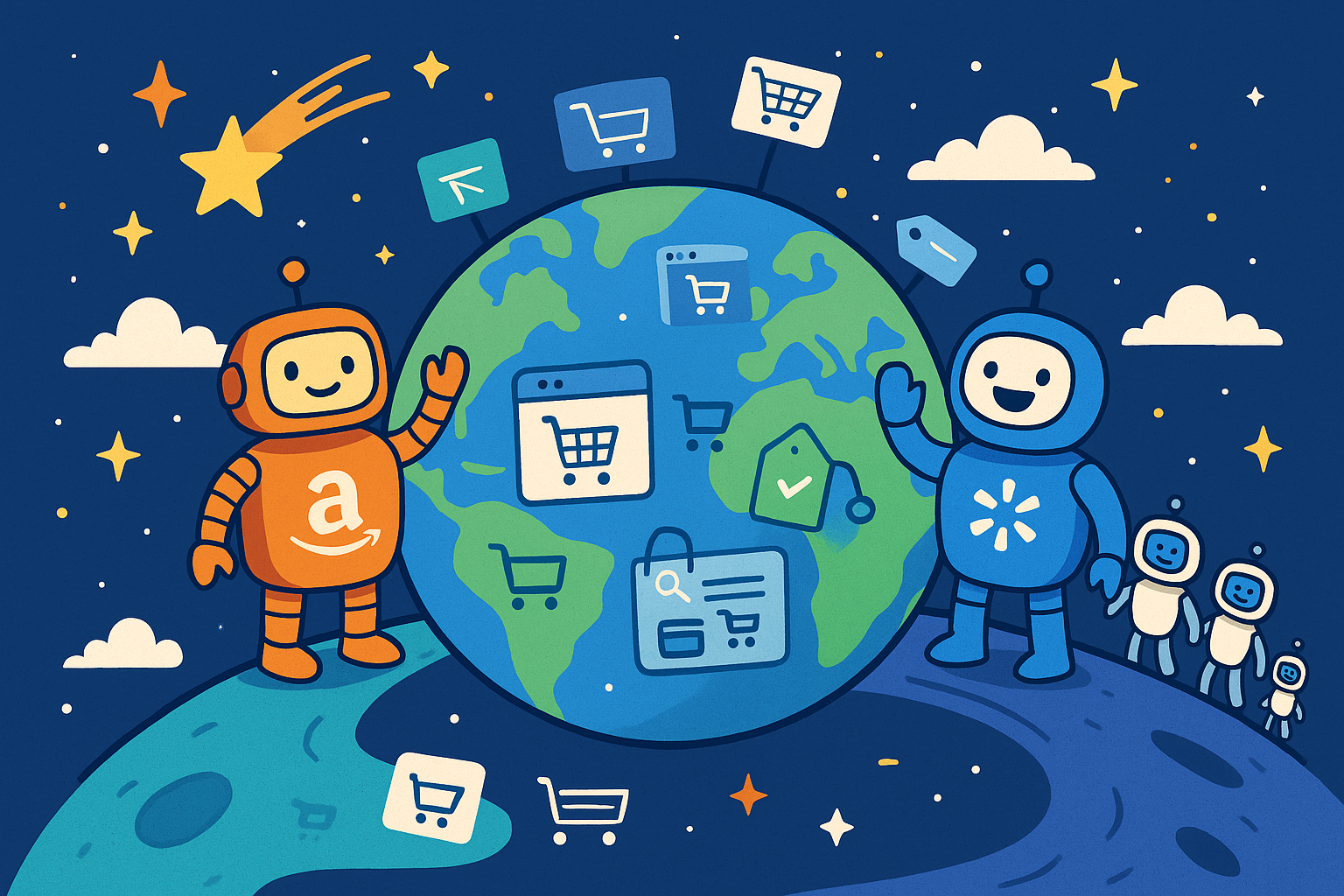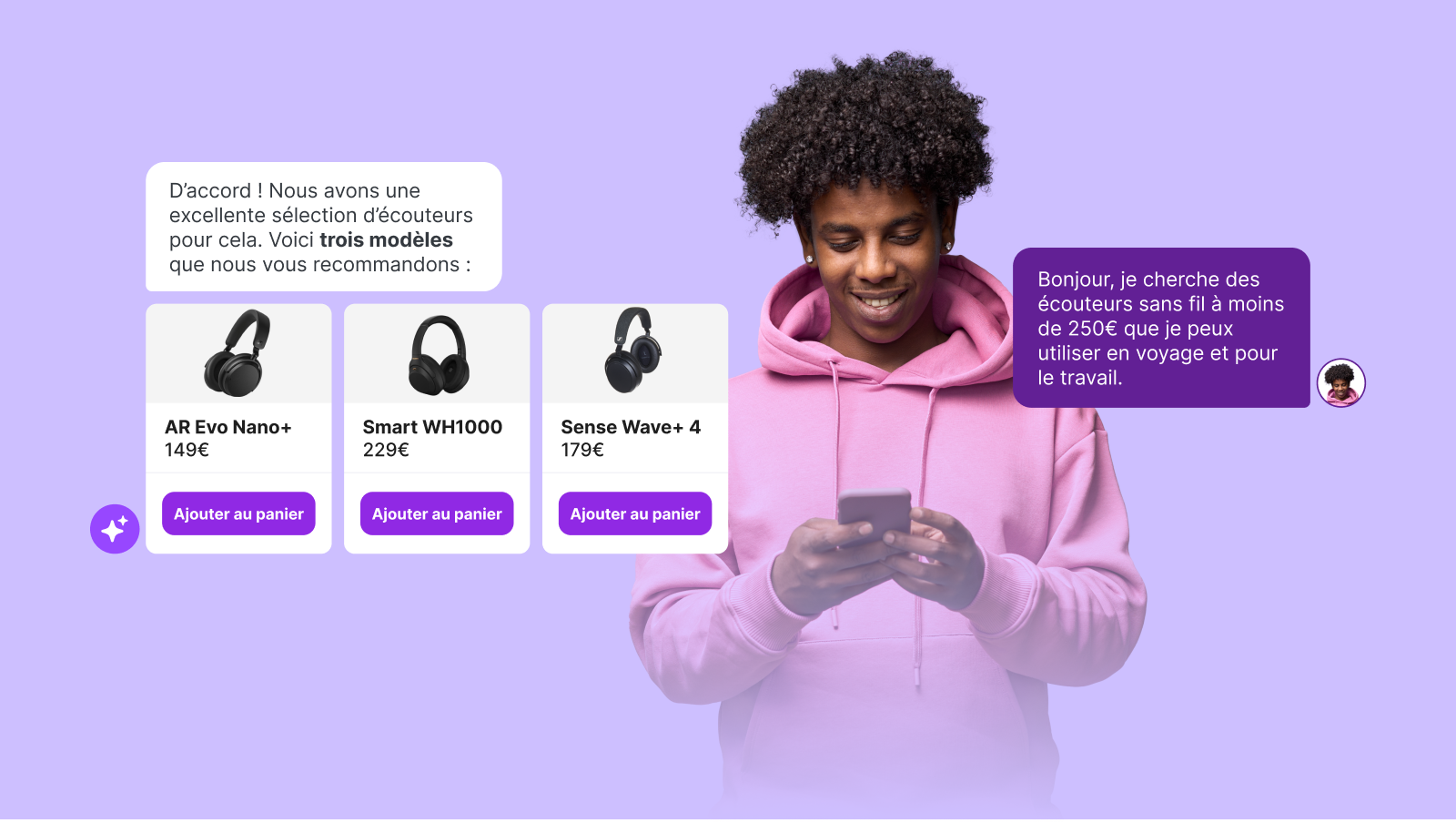5 Trends to Watch in Conversational AI
iAdvize

If you've engaged with a chatbot recently and had a less-than-stellar experience, you're not alone. As Forrester says:
Chatbots have a bad reputation, and it’s well deserved — most of them disappointDavid Truog, VP & Principal Analyst at Forrester
Why? First-generation chatbots are rules-based, meaning they could only provide a fixed amount of responses to a limited set of queries. While those simplistic bots have their merits, they're best used for simple tasks, like a password reset. Any time a site visitor has a more complex need — like trying to report a problem with a product or a delivery — rules-based chatbots can fall short.
It's no surprise to learn just 30% of consumers reported that they're "very satisfied" with how chatbots resolve customer service issues, according to Statista.
Some forward-thinking brands have recognized that rules-based bots are just one element of a well-rounded chatbot strategy. Conversational artificial intelligence (AI) — especially solutions that rely on augmented intelligence — is the next-generation chatbot technology.
As conversational AI pushes the capability of chatbots forward, more revenues are in reach for retailers. In fact, Business Insider predicts that chatbots will drive $142 billion in retail sales worldwide by 2024, up from just $2.8 billion in 2019. That equates to a massive 4,971.43% increase in five years:
Are you looking to add conversational AI to your chatbot mix? If so, knowing emerging trends can help you find the future-ready technology that empowers you to elevate digital service and drive more conversions.
Trend #1: Making AI Training More Efficient
To understand top trends in the conversational AI space, Deloitte analyzed patents filed in a recent year. The findings showed that the top area of technology innovation was conversational AI training.
As Deloitte explains, training a rules-based bot is time-consuming, requires significant manual intervention, and can take between six to nine months. As a result of these setup challenges, nearly half of companies in a recent survey said they had abandoned chatbot initiatives before they even get off the ground.
Despite the long time and effort involved, rules-based chatbots can never grasp the complex nuances of human communication and often yield unsatisfying responses. That's why shortening and improving the training process is a key priority for next-generation chatbot technology.
Part of the limitation of rules-based chatbots is that they rely on pre-programmed, scripted queries and responses. By contrast, conversational chatbots use natural language programming (NLP) and machine learning (ML) to derive user intent. NLP helps computers and applications understand various types of human communication — including spoken and written input — while ML helps applications learn from data and improve responses.
What does this mean for conversational AI chatbots? Those bots can learn from user input, recognize patterns, and use those insights to respond more effectively and accurately. Clearly, this is a big step forward from rules-based bots.
Augmented intelligence offers the best of both worlds by combining the NLP and ML used in machine learning with the human input used by rules-based bots. It builds on the human-in-the-loop approach through which AI and humans work together to accelerate the learning process and improve results.
The most sophisticated AI chatbot approaches have bona fide brand experts and enthusiasts who engage directly with customers engaged in training the AI, using an intuitive gamification approach. With a few taps on a screen, brand experts can confirm whether the AI's assumptions or correct.
What's more, human experts can suggest user intents based on their 1:1 interaction with customers. The result is a continuous cycle of learning and improvement that ensures AI chatbots and human brand representatives are working at peak performance.
Trend #2: Handling Complex Conversations
Deloitte's research found that handling complex conversations was another key area of focus for conversational AI chatbot innovators. It's a logical step since the simplistic approach of rules-based bots led to incomplete answers and misunderstandings.
The truth is, website visitors and customers often need assistance for a complex issue or may want help making a decision. Rules-based bots just can't deliver. Their fixed response set means they can't interpret the visitors' true needs or emotions. They also cant intuit when its time to hand someone off to a human for help navigating an issue.
Even when customers know they're talking to a bot, they expect to feel heard and respected. Getting stuck in a loop of repeated responses doesn't make the grade. In fact, research has shown that ⅔ of customers expect businesses to understand their needs. That means more than just having a rules-based bot ready to field questions 24/7 — and requires brands to provide empathetic and targeted responses.

Because AI chatbots are constantly learning, they can continuously grow their understanding of how to address more complicated user intents. They can start to learn variances in human language and expression and better match queries with responses. What's more, AI chatbots can know what they don't know and identify when human intervention is necessary. Even if a bot can't help a user navigate an issue from start to finish, it can collect valuable insight to help a human expert achieve resolutions more quickly.
Trend #3: Deploying Conversational AI for Multiple Use Cases
As Accenture explains, conversational AI can deliver efficiencies in interactions both within and outside any enterprise, with 4 common use cases:

Informational
Conversational AI chatbots can engage with website visitors to help them find the information they need to pursue transactions or resolve issues. For example, if a shopper is conducting product research, a conversational bot can add more value than a basic site search. By analyzing the shopper's inputs and actions on the site to derive intent, a conversational bot can provide a customized set of product recommendations. If the shopper chooses to engage with an agent, the bot can push the insight it has gathered to the brand representative to facilitate a positive interaction.
Enterprise Productivity
A conversational chatbot can provide support and ready access to information to internal team members. In the realm of customer service, a conversational AI solution can create a rich library of past customer conversations and discern which had the best results. When the AI detects a similar scenario, it can present agents with these prior successful interactions to guide communications towards successful outcomes.
Transactional
Conversational AI can do more than just present people with information. They can actually help people take steps towards conversion. Today's conversational bots can help individuals do everything from ordering food to booking movie tickets, although payment functionality may not be integrated. In those cases, bots may be able to guide people to checkout processes or offer advice on alternate forms of remittance.
Device Control
Conversational bots can also link directly with connected devices, such as smart home automation solutions, wearables, appliances, and even vehicles. With a few commands, users can turn on lights, check vehicle fuel levels, or turn on a home entertainment system. With this functionality, users can control connected devices from anywhere.
Trend #4: Reaching People on Varied Channels
Many brands start out with a rules-based chatbot accessible on every page of their website. The thinking behind this approach is that it gives site visitors 24/7 access to an entity that can respond quickly and handle some issues.
However, this approach produces mixed results, since rules-based bots have limited utility and can't answer the full range of potential visitor questions. Also, today's customer service environment is complex, with people reaching out for assistance across multiple channels, including messaging and social media.
With an advanced conversational AI, brands can deploy a multi-channel approach and extend their reach. Today's most sophisticated solutions allow brands to implement AI across varied channels — including SMS, Facebook Messenger, and WhatsApp — as part of an omnichannel e-commerce strategy. This provides a unified experience for shoppers and customers across the channels they prefer, while allowing brands to field more inquiries and deliver high-level service.
Given that 5+ billion people use SMS, 2+ billion people use WhatsApp, and 2.9 billion people use Facebook monthly, brands can reach far more people through a multi-channel conversational AI than they could on their website alone. After embedding AI into those most-used channels, brands can look towards further expansion to others, like Twitter and Apple Business chat.
As Statista reports, 3.09 billion people used over-the-top messaging apps on mobile phones in 2021. And that figure is on track to reach 3.51 billion users by 2025. A multi-channel conversational strategy should be in every brand's sights.
The goal is not to cast a wide net right away, but to build out a multi-channel conversational AI strategy over time. A broad rollout can lead to customer chat requests going unanswered — which can occur in 20% of cases.
Trend #5: Connecting to the Right Respondent at the Right Time
AI can deliver proven efficiencies to a business. They can improve efficiency, help digital customers find the information they need more quickly, and deflect costs by preventing unnecessary customer support interactions. Conversational AI chatbots can deliver more personalized experiences by using their intelligence on human language to anticipate people's needs and provide meaningful responses. What's more, the vast data set collected through user interactions can reveal patterns that can help brands elevate service and uncover new revenue streams.
Despite the power and promise of conversational AI, it's not the end game for customer service. Here's why: In deriving its annual CX Index scores, Forrester evaluates customer experience (CX) quality across three dimensions efficiency, ease, and positive emotion.
While bots can sometimes deliver on the first two tenets, it often takes human interaction to generate positive emotions. An advanced conversational AI solution will be able to detect the limits of its capability to help customers and make it easy to get 1:1 support from customer service professionals or pre-sales experts.
Forrester research has validated that brands that use a blend of advanced AI and human interaction achieve measurable gains:
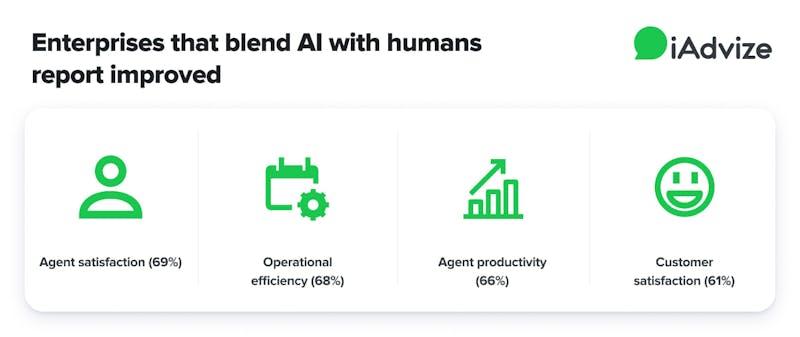
In addition, Forrester affirmed that bots are well-equipped to handle straightforward requests, gathering context, and interpreting conversation flow. But humans are better at building trust, engaging personally with customers, and navigating more complex issues.
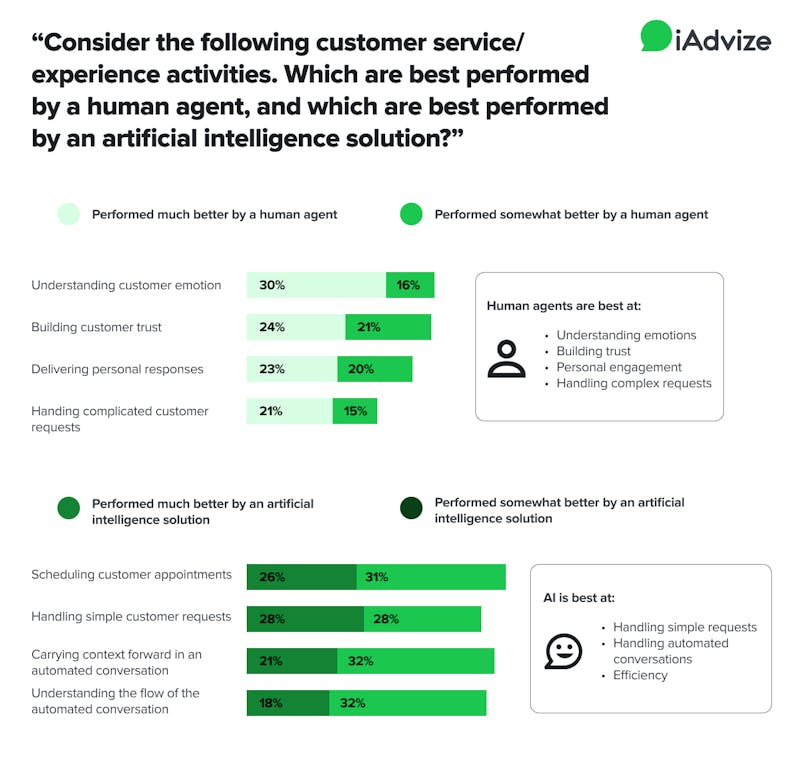
What's the takeaway? Smart digital service strategies use a mix of respondents, including bots and humans.
The most advanced approaches don't route every request for human intervention to in-house customer service agents. Instead, they provide opportunities to link shoppers in the pre-sales stage to brand experts who can provide advice to guide purchase decisions. That way, brands can provide information and drive more conversions, while allowing in-house professionals to focus on post-sales support.
Conclusion
There's no question that chatbots are here to stay. But brands need to move beyond simplistic rules-based bots to access the power of conversational Al.
As Forrester explains, conversational AI is essential to delivering experiences that delight rather than disappoint:
For your organization’s chatbot to delight customers, employees, and partners instead of disappointing them, you need to master conversation design, a new discipline for experiences based on conversational AIDavid Truog, VP & Principal Analyst at Forrester
A conversational AI approach built using augmented intelligence lets you handle high volumes of customer interactions and quickly route customers to the right respondent. AI chatbots can handle more routine requests, while humans can intervene when the stakes or emotions may run high.
Greater satisfaction — among shoppers, customers, and employees alike — will naturally follow. Your shoppers and customers can get quick answers when needed, and access the empathy and personalized attention they deserve. Meanwhile, your frontline team members can feel less burdened by simple requests and focus on higher-value tasks and optimizing service.
The next chapter in retail compels you to embody Forrester's three tenets of CX excellence: effectiveness, ease, and emotion. A digital service strategy that blends the latest in AI with human expertise is your way forward.
Are you ready to deploy conversational AI, powered by augmented intelligence? Our Conversational AI playbook is your definitive guide to all the benefits and best practices you need to know to get started. Access it here: https://www.iadvize.com/en/conversational-ai-playbook

.png)
.png)




